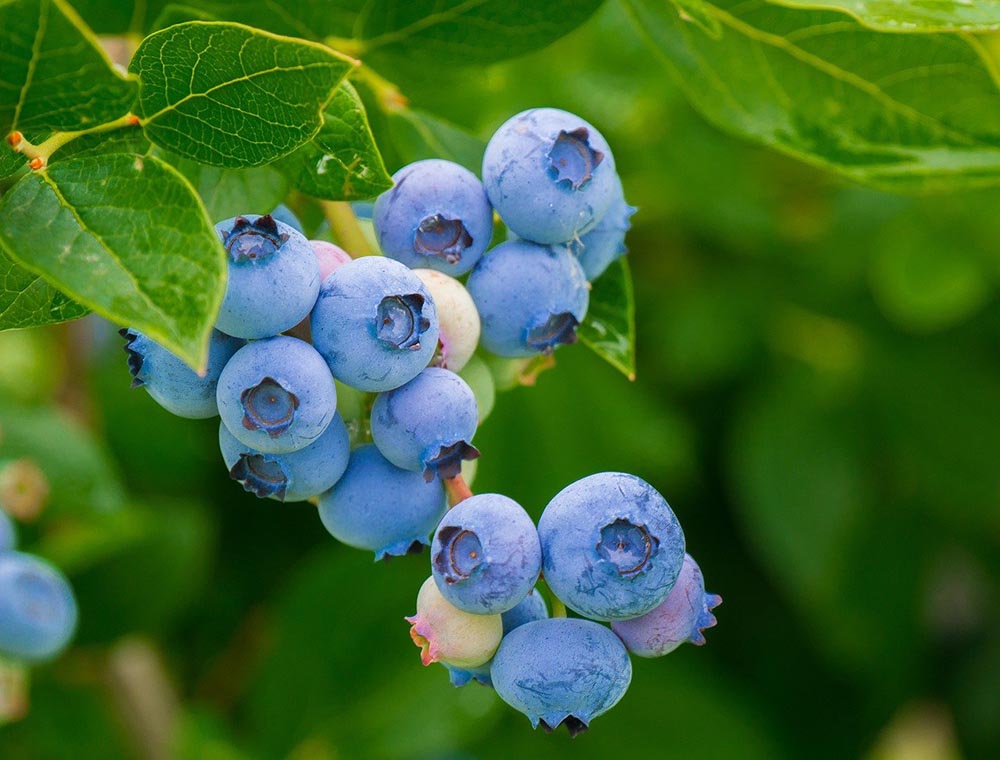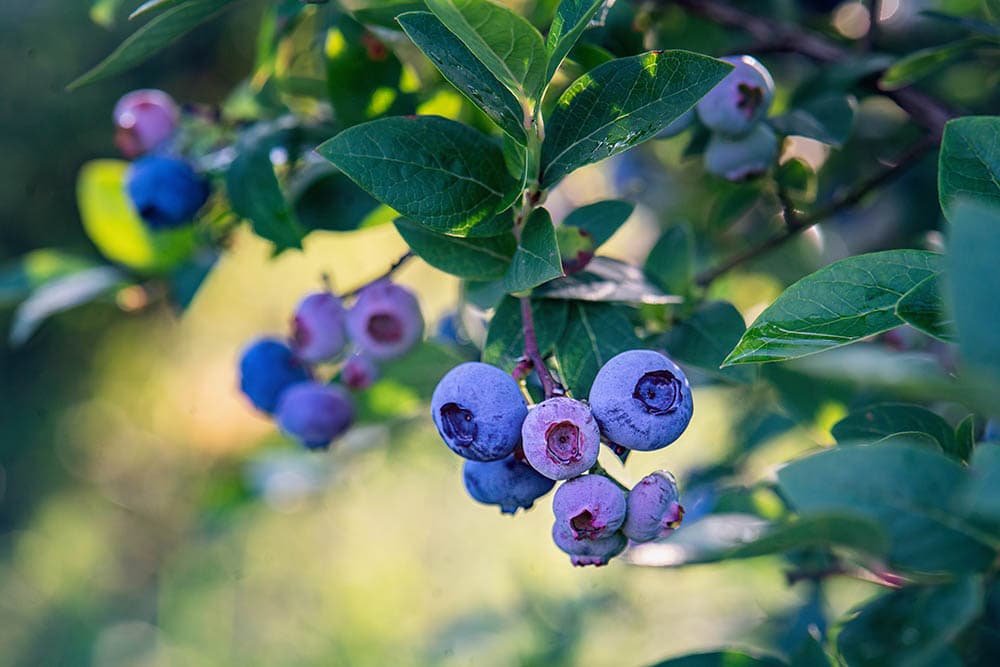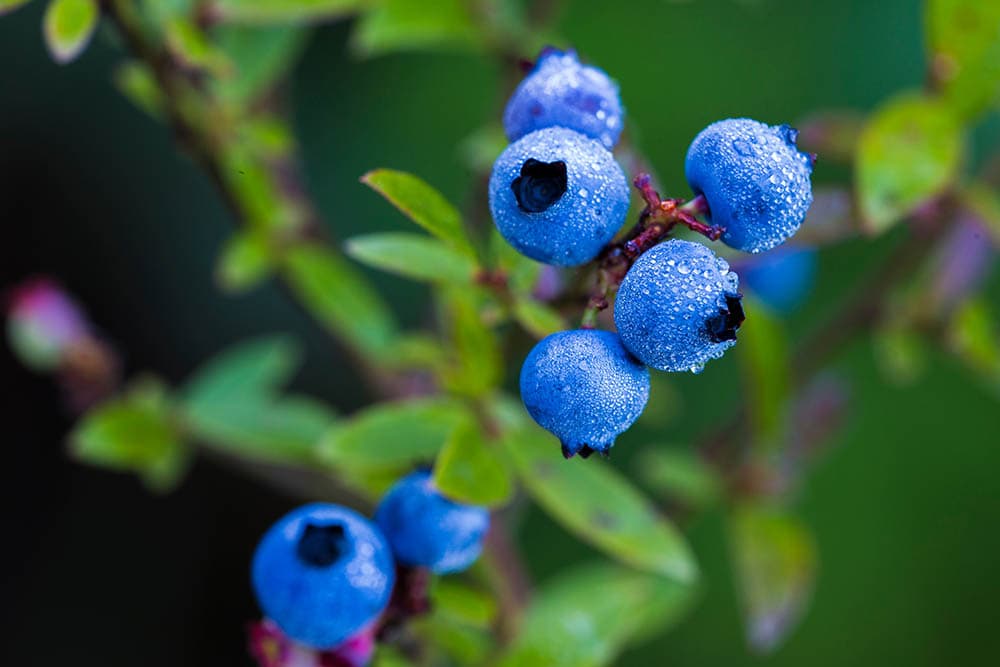8 Best Blueberry Varieties to Grow at Home (with Pictures)
-

- Last updated:

Blueberries (Vaccinium sect. Cyanococcus) are perennial flowering berry-bearing plants from Asia, Europe, and North America. The berries are popular for their numerous health benefits. These plants also have an ornamental value, thanks to their attractive flowers, colorful berries, and the overall appearance of the berries’ shrubs.
So, are you searching for the best variety of blueberries to rear in your garden? We’ll take you through the eight best blueberry types to grow at home. Let’s begin with the blueberry fact sheet to help you care for your plant.
Fact Sheet
| Botanical Name: | Vaccinium sect. Cyanococcus |
| Common Name: | Blueberry |
| Plant Type: | Perennial flowering shrub |
| Potting Soil: | Fertile, humus, and organic-rich potting soil. |
| Soil pH: | The soil should be acidic with a pH ranging from 4.5 to 5.2 |
| Outdoor Soil: | Sandy loam or loam |
| Outdoor Light Requirements: | Dappled shade, full sun, partial shade, and light shade |
| Indoor Light Requirements: | Not ideal for indoor rearing |
| Watering Requirements: | The soils should be moist but not soggy; it requires more watering during fruiting time |
| Fertilizing: | Use nitrogen-rich organic fertilizers |
| Hardness: | Depends on the species |
| Bloom Time: | Spring and summer |
| Place of Origin: | North America, Asia, & Europe |
The 8 Best Blueberry Varieties to Grow at Home
Growing blueberries at home can be challenging, but it is a perfect crop to thrive in your garden if you provide the right conditions. The classification of blueberries falls into two broad categories: hybrid and natural cultivars.
Let’s dive into some of the best individual blueberry varieties to grow at home.
1. Bluecrop

| Size: | 6 feet tall |
| USDA zones: | 4–7 |
| Color of berries: | dark blue, almost black |
| Suitable for pots: | No |
The Bluecrop Blueberry is an open-growing, upright, cold-hardy Northern Highbush variety with a relatively large size and good yield. This variety is among the most popular cultivars worldwide, owing to its huge size.
This crop will light your garden with its red stems between the bright green foliage and bountiful white flowers, providing a unique ornamental appeal throughout winter. Most remarkable are the medium-sized, almost black blueberries famous for excellent taste. The berries are also resistant to cracking.
This mid-season cultivar begins flowering in May, and the fruits are ready for harvest in early August. It thrives in organic-rich soils with sufficient moisture and good drainage. The variety has shallow roots, so you must be more cautious when tending or cultivating other plants in the garden.
2. Sunshine Blue
| Size: | 4 feet tall |
| USDA zones: | Not very hard; zones 6–9 |
| Color of berries: | vibrant blue |
| Suitable for pots: | Yes |
Sunshine Blue is popular for its ornamental value, thanks to the pink flowers sprouting during summer and beautiful blue-green foliage, which changes to burgundy red during fall. Sunshine Blue bushes have a medium height, making them the perfect choice for low hedges and borders.
It’s easy to prune and thrives in containers, making it a top choice for small-space gardens. The berry’s ripening season attracts different birds to your garden, while the foliage gives off a luring splash of color as fall approaches.
3. Pink Icing
| Size: | 3–4 feet tall |
| USDA zones: | 5–11 |
| Color of berries: | dark blue |
| Suitable for pots: | Yes, you need a large pot |
Most Pink Icing cultivars are excellent options for ornamental purposes. The new spring growth enriches your garden with pink shades complemented by dark green foliage. The plant’s foliage changes to blue with a turquoise hue during winter. These colors vary depending on the cultivar’s exposure to sunlight. Another outstanding aspect of Pink Icing is the robust flavor that surpasses most categories of berries.
The bush requires low maintenance, saving you from the burden of pruning. This fast-growing plant can also live for up to 20 years if grown in optimal conditions.
4. Top Hat
| Size: | 2 feet tall |
| USDA zones: | 4–7 |
| Color of berries: | dark blue |
| Suitable for pots: | Yes |
This cultivar was initially developed at Michigan State University. The half-growth cultivar has rich-green-colored leaves and modest dimensions. It produces dark blue berries with white flowers in spring while the leathery green foliage turns to bronze in fall.
The petite Top Hat is suitable for small spaces, and you can grow it in pots. Some gardeners have tried trimming this variety into a tidy bonsai, and it worked! You can also grow it as a border plant.
Top hat plants thrive under the sun but can also withstand partial sunlight. They grow at medium speed under stable conditions. It will produce full-sized berries ready for harvesting in July and August.
5. Brightwell
| Size: | 6–10 feet tall |
| USDA zones: | 6–9 |
| Color of berries: | dark blue |
| Suitable for pots: | No |
The Brightwell cultivar is a conspicuous crop variety that produces dark blue berries. This large cultivar grows to a ten feet maximum possible height with large berries and almost equal spread.
It bears berries that change in color from pink to blue as the fruit matures. This self-fruiting cultivar yields large harvests, and one plant can give you enough berries if you tender it under optimum conditions.
Unlike many cultivars that need soil amendment and mulching, the Brightwell isn’t picky as it can survive the late freezes. The plant also thrives in partial sunlight, but it’s recommended to expose it to full sunlight for maximum yields.
Brightwell produces beautiful and mainly green foliage. Give your home garden a new look with attractive pink flowers whose beauty can attract even the most unconcerned eye. You can use the plant’s beautiful regalia to spruce up your home. This plant can form even tall hedges and serve as a windbreak.
6. Legacy
| Size: | 6 feet tall |
| USDA zones: | 5–8 |
| Color of berries: | Light blue |
| Suitable for pots: | No |
Spruce up your home landscape or garden with Legacy cultivar and feast on its tasty fruits. USDA’s New Jersey Agricultural Experiment Station observes that the Legacy is a Northern Highbush cultivar famous for its large berries’ delicious taste and sweetness.
This disease and pest-resistant plant attains a maximum height of over 6 feet upon maturity and spreads between 3–6 feet. Its foliage turns crimson during fall, while the abundant yields and mid-season harvest is characterized by upright and rapid growth. It retains some green foliage throughout mild winter.
7. Lowbush Blueberry

| Size: | 6 feet tall |
| USDA zones: | 2–6 |
| Color of berries: | dark blue, almost black |
| Suitable for pots: | No |
The Lowbush cultivar is a wild lowbush variety originating from the northern regions of the US and Canada. This cultivar grows into low bushes characterized by beautiful foliage and bright blue fruits.
The fruits have high nutritional value and pleasant flavor. The cultivar produces generous crops with millions of blossoms for every acre and almost every plant bearing berries. The plant can thrive under the dappled shade of trees such as conifers.
The berries need nitrogen as their primary nutrient. You can fertilize them using granular or soluble plant food ideal for acid-thriving plants, including azaleas and rhododendrons.
Remove the flowers from the berries in the first year after planting to promote stable growth. Also, harvest the fruit carefully in the first year of growth to avoid injuring the plant. Avoid raking the fruits when harvesting as it may dislodge the rhizomes, damaging the plant.
8. Rabbit-Eye Blueberry
| Size: | 3–6 feet tall |
| USDA zones: | 5–9 |
| Color of berries: | dark blue |
| Suitable for pots: | No |
Rabbit-Eye bushes are a wild cultivar from the Southeastern United States. This plant bears fruits, but it’s commonly reared at home for its ornamental value.
The Rabbit-Eye cultivar has elegant, open, and upright foliage with elongated, thin stems that produce bell-shaped white flowers and dark blue berries. This plant is suitable for hedges and borders of your informal garden. The berries and flowers are spread in small clusters over the branches, giving the highbush an original outlook.
Conclusion
There are different kinds of blueberries, although most of us often assume that the blueberry is one plant. With so many options, picking the right match isn’t a walk in the park. The good news is that there is no harm if you plant more than one variety in your home garden.
Give your blueberry plant the best conditions and be patient, as some cultivars take a few years before production reaches its peak.
Related Reads:
- How to Make Potting Soil for Blueberries – 4 Simple Steps
- Is My Blueberry Bush Dead? (4 Signs to Look For)
Featured Image Credit: ChiemSeherin, Pixabay
Contents

